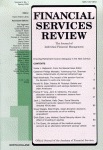Mutual Fund Distribution Fees
An Empirical Analysis of the Impact of Deregulation
DOI:
https://doi.org/10.1016/1057-0810(91)90045-ZAbstract
The Securities and Exchange Commission’s Rule 12b-1 ended a 40-year prohibition on the payment of distribution fees by mutual funds. The fees have the potential to create conflicts between fund mangers and shareholders. This study examines the characteristics of funds implementing the plans, and assesses costs and benefits. Findings reveal that there is a growing tendency of funds, particularly load funds, to adopt the plans. The costs have begun to increase dramatically in recent years though some load funds with plans have begun reducing their loads. However, 12b-1 plans do not seem to contribute to the expense ratios of funds oriented toward capital gains. The plans offer the intangible benefit of spreading load charges across time, thus increasing a fund’s attractiveness to a broader range of investors. Journal ofFinancial Services Research, Vol. 5, No. 1 (March 1991), pp. 25-42. (Reprinted with permission of Kluwer Academic Publishers.)
Published
How to Cite
Issue
Section
License
Copyright (c) 1991 JAI Press Inc.

This work is licensed under a Creative Commons Attribution-NonCommercial 4.0 International License.
Author(s) retain copyright and grant the Journal right of first publication with the work simultaneously licensed under a Creative Commons Attribution-NonCommercial 4.0 International License that allows to share the work with an acknowledgment of the work's authorship and initial publication in this Journal.
This license allows the author to remix, tweak, and build upon the original work non-commercially. The new work(s) must be non-commercial and acknowledge the original work.


